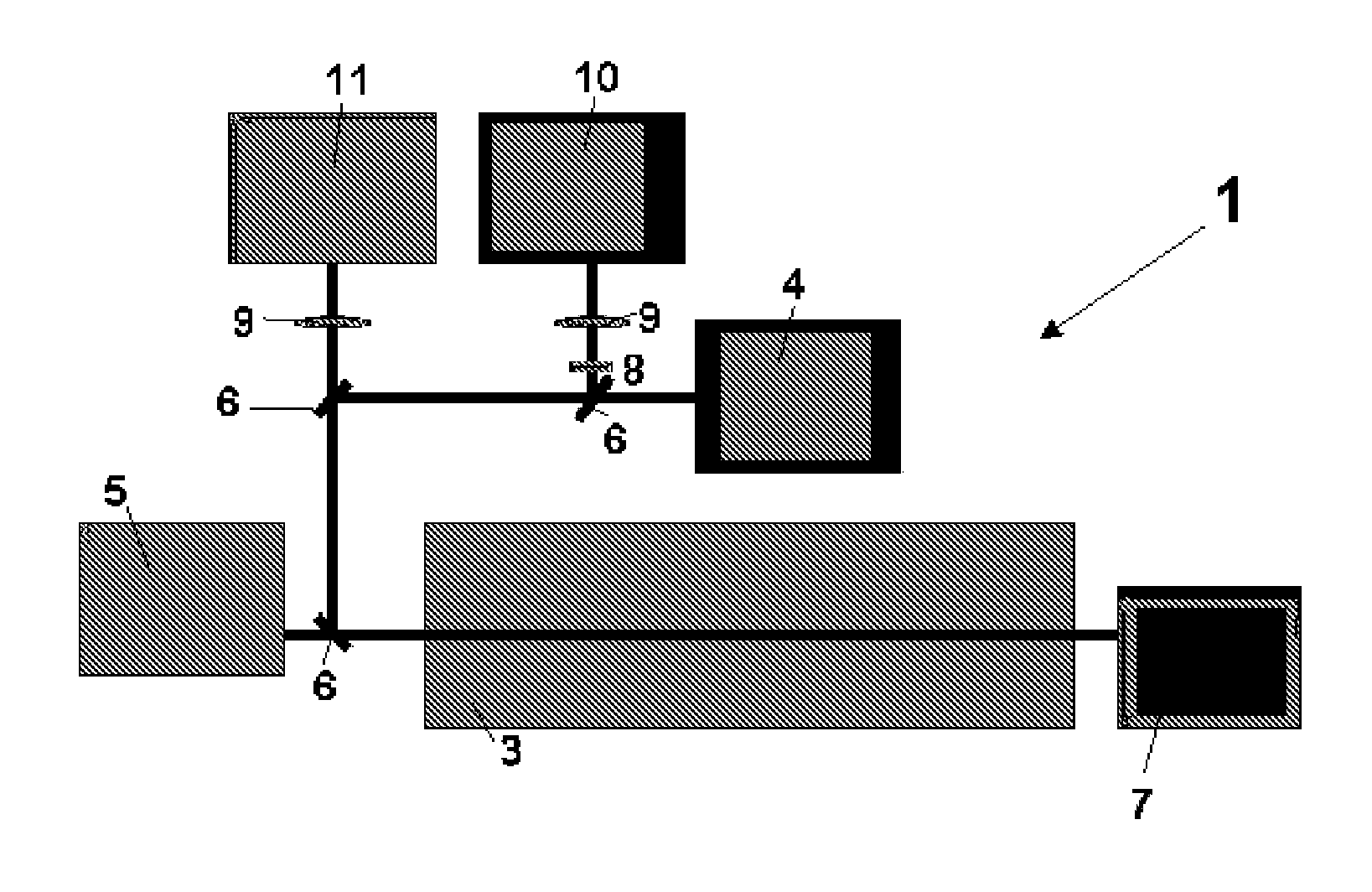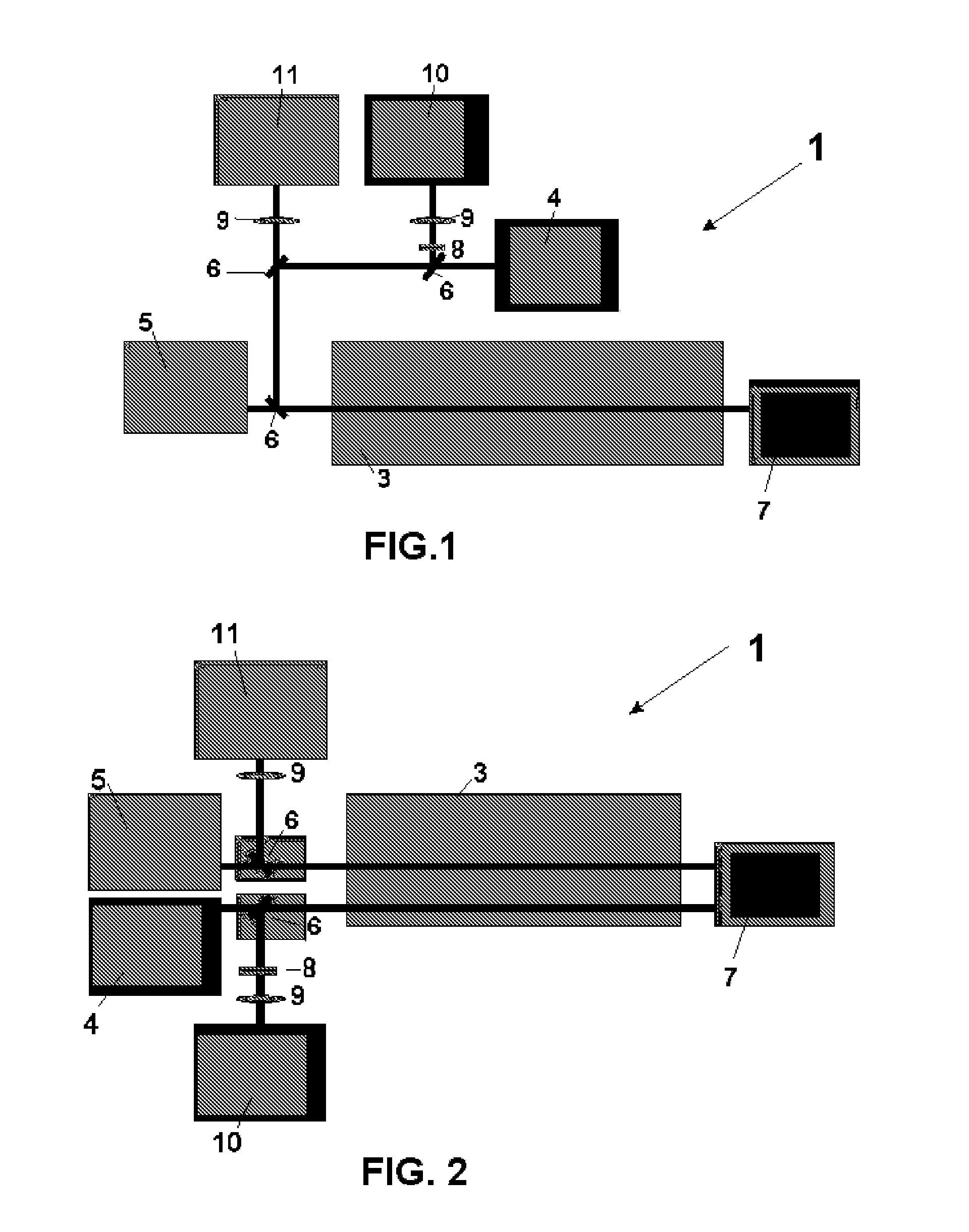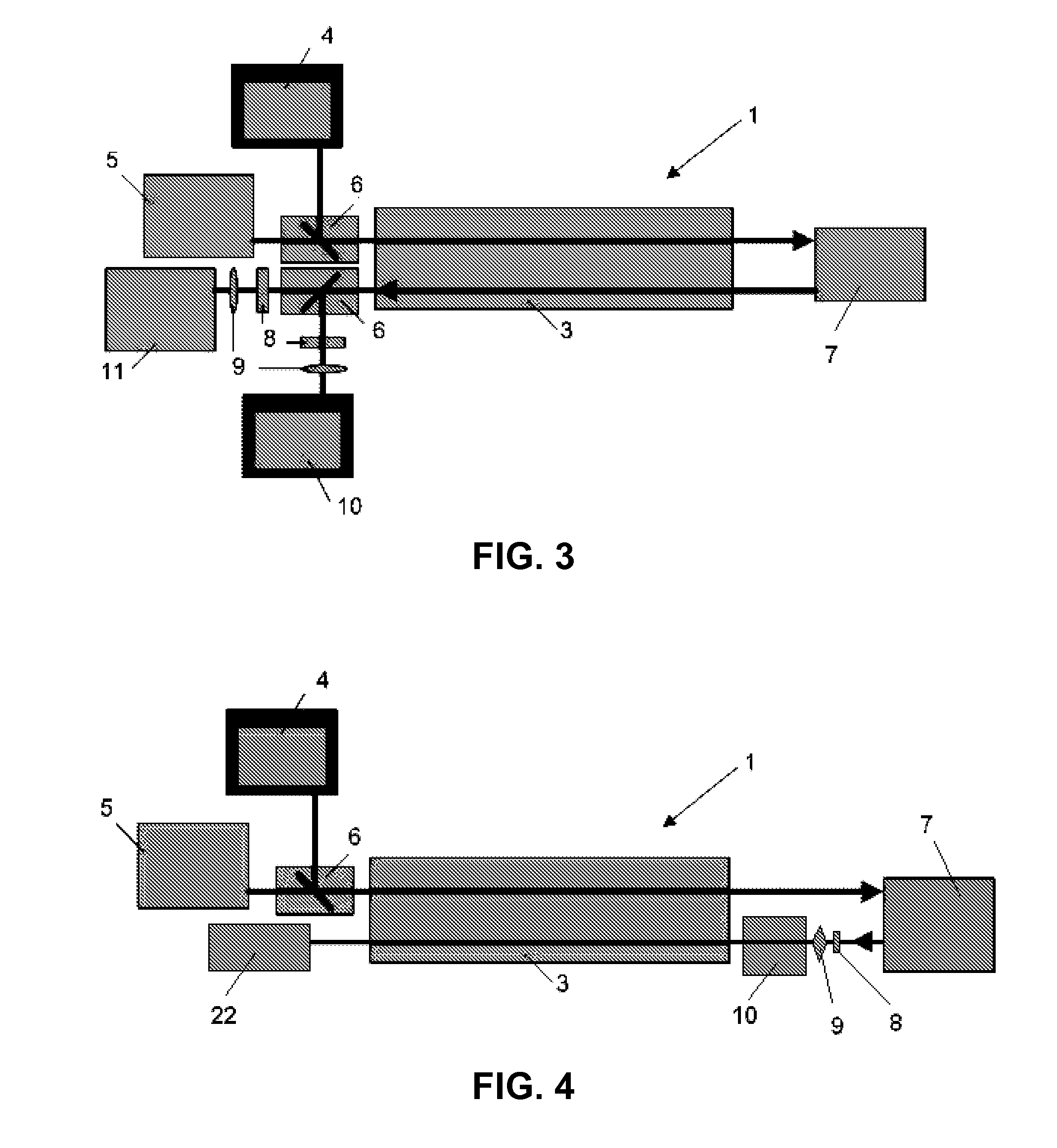Equipment for infrared vision of anatomical structures and signal processing methods thereof
a technology of infrared vision and anatomical structures, applied in the field of photonics, image acquisition, image processing, vision enhancement and information extraction, can solve the problems of affecting the surgical field, and reducing the surgical field, so as to improve the surgeon's orientation, facilitate the viewing of the vasculature, and reduce the surgical procedure. the effect of invasiveness
- Summary
- Abstract
- Description
- Claims
- Application Information
AI Technical Summary
Benefits of technology
Problems solved by technology
Method used
Image
Examples
Embodiment Construction
[0055]In view of the aforementioned figures and according to the numbering adopted in them, different embodiments of the invention are described hereunder.
[0056]Thus, as shown in said figures, the equipment comprises a multimodal image acquisition unit (1) and an image processing unit (2).
[0057]The multimodal image acquisition unit (1), whose preferred implementation as shown in FIG. 1 includes an image capturing device, preferably an endoscopic image acquisition device comprising an endoscope, a fetoscope or a laparoscope and additional optical systems, comprising said systems at least one channel from which the video images from the inside of the patient are acquired, and at least one light source to illuminate the observed tissues.
[0058]In a preferred embodiment of the invention, the video channel or channels that are available on the endoscope are coupled to an infrared light source (4) and a white light source (5) or a light source that contain at least three wavelengths within...
PUM
 Login to View More
Login to View More Abstract
Description
Claims
Application Information
 Login to View More
Login to View More - R&D
- Intellectual Property
- Life Sciences
- Materials
- Tech Scout
- Unparalleled Data Quality
- Higher Quality Content
- 60% Fewer Hallucinations
Browse by: Latest US Patents, China's latest patents, Technical Efficacy Thesaurus, Application Domain, Technology Topic, Popular Technical Reports.
© 2025 PatSnap. All rights reserved.Legal|Privacy policy|Modern Slavery Act Transparency Statement|Sitemap|About US| Contact US: help@patsnap.com



